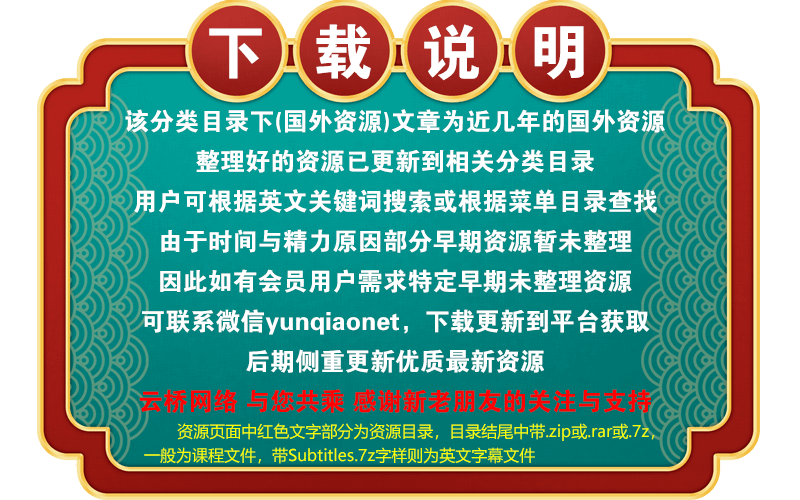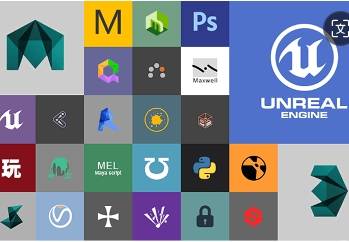Release date:2017, March
Duration:08 h 04 m
Author:Dhruv Govil
Skill level:Beginner
Language:English
Exercise files:Yes
What Will I Learn?
Develop tools in Python, inside and outside of Maya.
Create advanced user interfaces to interact with their tools and manage assets.
Have the skills necessary for a studio technical director.Requirements
You will require a basic knowledge of Autodesk Maya, like creating and manipulating simple objects.
You will need a working copy of Maya. Preferably 2017 and above, but 2011 should be the minimum. Links to the trial and educational version will be provided.
No programming knowledge is required, but a basic understanding will help.Description Welcome to Python for Maya: Artist Friendly Programming!
This course will take you from your very first line of Python code to creating advanced user interfaces with all that fluidity we expect of a professional. You’ll learn skills that will help you work faster by automating repetitive tasks so you can focus on the work you want to be doing. This can in turn also add incredible value to you on the job market and help you move up the ladder faster.
Whether you’re a beginner or already familiar with Python, there’s a lot this course can offer you. Projects are split up by difficulty and there’s a project for you whether you’re a modeller, animator, rigger or lighter.
Here’s what we’ll cover:
Python Fundamentals: functions, classes, if statements, etc…
Advanced Python concepts like lambdas,partials, regular expressions, etc..
Writing User Interfaces with Maya Cmds and Qt
Writing data to disk and loading it back in to Maya as JSON
Creating command line tools
Setting up a professional workflow
The Qt interface framework: custom widgets, signals and slots, stylesheets etc
Additionally, this is currently the only course that covers changes introduced in Maya 2017.You’ll have full source code access with comprehensive comments to follow along with, as well as other resources that will help you learn when you’re done.
I taught myself Python several years ago when I was an artist, and today hundreds of artists use my tools everyday. I’ll be using the same project driven methods to teach you Python.
Ready to start your programming journey? Let’s go!
This has:
Links to all the software you’ll need.
Source code for all our projects with comments.
Other resources to further your education.
What are the requirements?Maya 2011 or higher (2017 preferred).
A computer with an internet connection
There will be links to everything else you need on the github page.What am I going to get from this course?
You’ll have the skills to build tools that will speed up your work.
The necessary workflow to build code that can be shared with your team or studio.
The necessary skill set that we’d ask of a pipeline developer in major studios.
What is the target audience?Beginners with no programming experience
Intermediates with some experience looking to hone their skillsWho is the target audience?
This course is for artists who want to learn Python programming to make tools, work more efficiently or add job value.
The course is targeted to beginners with no programming experience as well as intermediate’s who want to learn new skills.00-Introduction 01-Overview of the Course Materials 02-Using the Script Editor 03-Hello World 04-Hello Cube A Hello World in 3D 05-Project 1 Creating a Cube Rig 06-Variables and Types 07-Overview of Mayas Programming Languages and Libraries 08-Nodes in Maya 09-Python 2 vs Python 3 10-Saving Your Scripts 11-Project 2 The Object Renamer 12-Finding Help 13-The List Command 14-If Statements 15-For Loops 16-While Loops 17-Finding Object Types 18-If Elif and Else Statements 19-Setting Up PyCharm 20-Functions 21-Dictionaries Keys and Values 22-String Formatting 23-Scopes in Python 24-Project 3 The Gear Creator 25-Making a Python Script 26-Creating a Gear 27-Modifying the Gear 28-Classes Custom Types and Interfaces in Python 29-Converting our functions to classes 30-Project 4 The Animation Tweener 31-Overview of User Interface Libraries in Maya 32-Getting Data for the Tween Function 33-Setting Keys with the Tween Function 34-Creating a User Interface 35-Reusing our Interface for the Gear Creator 36-Adding our Scripts to the Maya Shelf 37-Project 5 The Controller Library 38-Overview of the Qt Interface Library 39-Qt vs Cmds 40-Duck Typing 41-Qtpy Using Qt in Python 42-Importing Qt Modules 43-Creating the Library Directory 44-Saving Files 45-Finding Files 46-Loading Controllers 47-Our First Bug 48-JSON Reading and Writing Data 49-Capturing Screenshots 50-Qt Documentation 51-Displaying a Qt Window 52-Building the Qt Interface 53-Making a Gallery for our Controllers 54-Signals and Slots 55-Making our Interface Work 56-Project 6 The Light Manager 57-PyMel An Alternate API in Maya 58-Starting the Interface and Partials 59-Custom Widgets and Lambdas 60-Adding Visibility and Intensity to our Widget 61-Adding Color to our Widget 62-Portable Code and Logging 63-MQtUtil Combing Qt with Maya Controls 64-TryExcept Handling Errors 65-Exporting Our Lights 66-Importing Our Lights
 Channel and
Channel and  Group
Group
1、登录后,打赏30元成为VIP会员,全站资源免费获取!
2、资源默认为百度网盘链接,请用浏览器打开输入提取码不要有多余空格,如无法获取 请联系微信 yunqiaonet 补发。
3、分卷压缩包资源 需全部下载后解压第一个压缩包即可,下载过程不要强制中断 建议用winrar解压或360解压缩软件解压!
4、云桥网络平台所发布资源仅供用户自学自用,用户需以学习为目的,按需下载,严禁批量采集搬运共享资源等行为,望知悉!!!
5、云桥网络-CG数字艺术学习与资源分享平台,感谢您的赞赏与支持!平台所收取打赏费用仅作为平台服务器租赁及人员维护资金 费用不为素材本身费用,望理解知悉!



评论(0)